The Rich History Of Japanese Wine And Why It Should Be On Your Radar
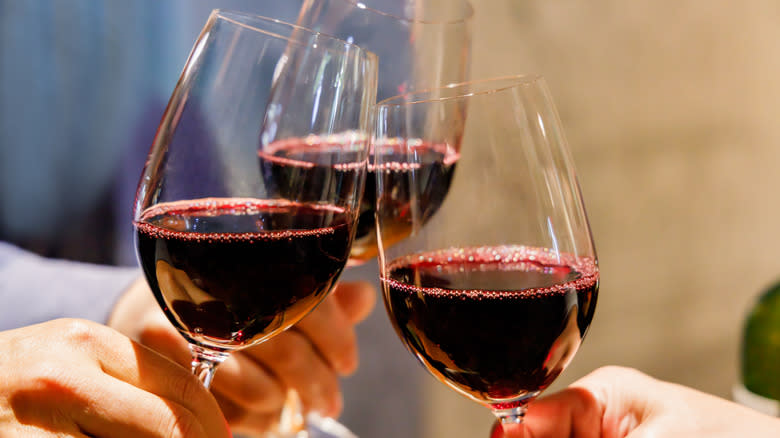
Ask most wine aficionados about wines from France or Italy, and they'll wax poetic about the differences between the two. Ask about Japanese wine, and you'll likely get a blank look, or even, "Do you mean sake?"
Japan has taken on many Western drinking traditions. Beer is Japan's go-to drink; Japanese bartenders craft cocktails with the precision of tea ceremonies. The best Japanese whiskys are now nearly as renowned as its Scottish inspiration. Wine, however, has yet to catch on.
Wine makes up just 4% of Japan's alcoholic beverage sector — a tiny margin compared to 16% in the United States. Most wine consumed in Japan is imported, and of the wine produced in Japan, 80% is made from imported grape concentrate. In Japan, these wines are labeled "domestic wines;" only wines made with Japanese grapes are classified as "Japanese wine." Authentic Japanese wines only make up 4.8% of the Japanese market, and they're virtually impossible to find outside of Japan. But, thanks to a new generation of Japanese experts and winemakers, that's starting to change.
Read more: 13 Liquors Your Home Bar Should Have
The Early History Of Japanese Wine
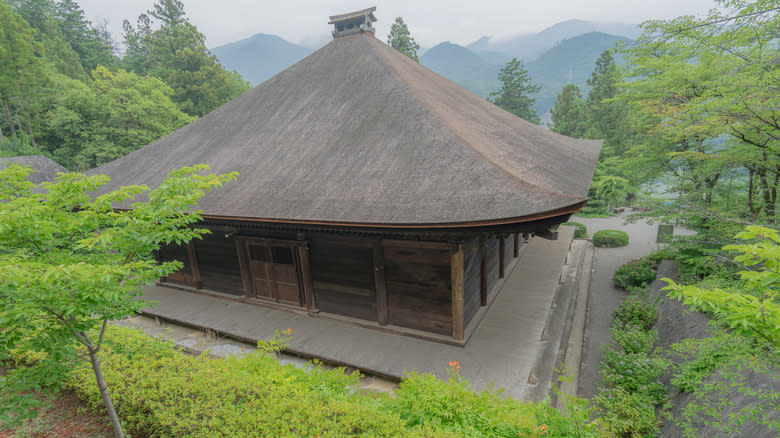
The history of Japanese wine is murky. Some sources claim that Japanese wine only dates back 150 years — but the full history of Japanese wine goes back much further.
While the first private, western-style winery didn't open until 1877, the Japanese have been fermenting grapes for centuries. According to legend, the history of Japanese grape cultivation begins with an eighth-century monk named Gyoki. One night, the Buddha of medicine came to Gyoki in a dream holding a bunch of grapes in one hand and a bottle of medicine in the other. The dream inspired Gyoki to found the Daizenji temple in Koshu Valley, where he grew grapes and other plants for medicinal purposes. Soon, farmers were growing grapes throughout the Valley. Damaged grapes were fermented into wine, often heavily sweetened to mask the taste of the low-quality fruit. In Japan, this wine is called budoshu, or grape alcohol. Some Japanese wine drinkers consider it distinct from Western wine, but the similarities are undeniable.
Traditionally, budoshu played a smaller role in Japanese culture than shochu or sake. The people who drank it were often grape farmers, who would make the drink to serve on special occasions like weddings or funerals. In the early 20th century, the government cracked down on home brewing. But farmers still fermented the drink in secret, hiding the crocks from authorities. Now, though, Koshu Valley grape farmers make budoshu under a special license — continuing an age-old tradition.
The History Of Modern Japanese Wine
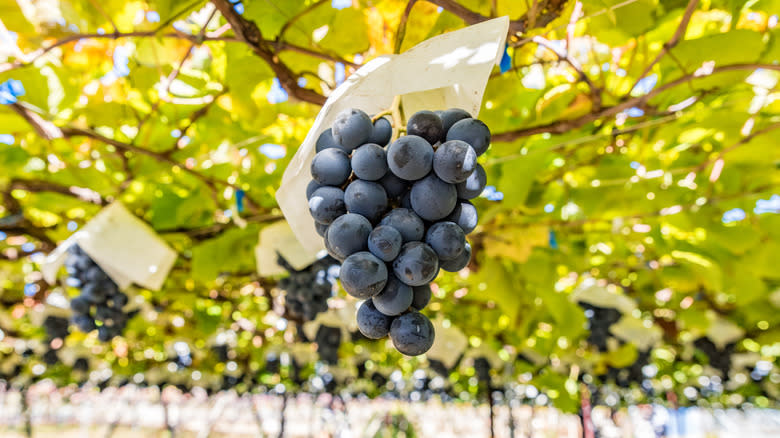
The Japanese first encountered European wines when Portuguese missionaries introduced the drink in the 16th century. Nobles began drinking imported Portuguese wines, and some even tried to make their own. However, when Japan shut itself off to foreign influence, European practices — like drinking wine — went underground or disappeared entirely.
Almost 300 years later, Japan reopened. The country quickly started to adopt Western culture, and had its first European-style winery by 1877. The winery sent researchers to Europe to study winemaking, but the endeavor was literally — and figuratively — fruitless. Western grape varieties failed, and early Japanese winemakers had a flawed understanding of the process. They approached winemaking like making sake, focusing on technique and technology instead of the grape quality. But sake isn't like wine, and the wine they produced wasn't very good. The Japanese public showed little interest, but the wine industry continued to grow. Suntory, the famed Japanese beverage brand, launched a heavily-sweetened wine as its first product in 1907. In the 1920s, a man named Zenbei Kawakami set out to develop a wine grape that could survive Japan's climate. His efforts produced Muscat Bailey A grapes, now one of Japan's most popular grapes.
The industry continued to grow after World War II. The 1964 Tokyo Olympics brought a cosmopolitan crowd to the country — and a fresh interest in wine. Popularity boomed in the 80s, and wine developed a reputation as a status symbol. By the '90s, Japanese winemakers were gaining recognition.
Japanese Viticulture
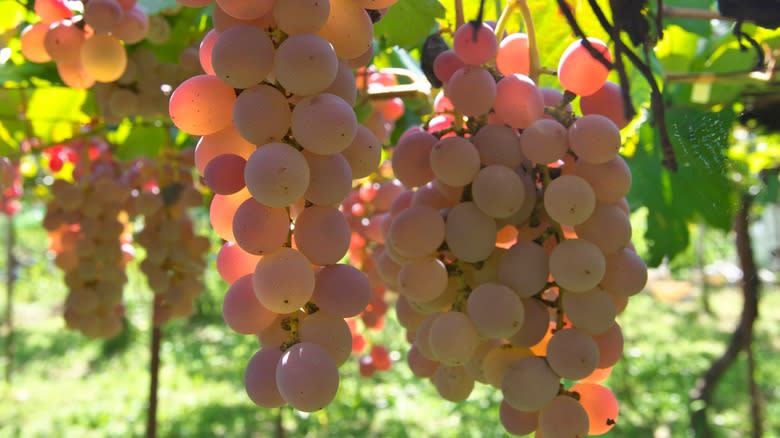
Perhaps the biggest barrier to Japan's burgeoning wine industry is the country's climate. Despite Japan's long history of cultivating grapes, the weather is too cold and damp for most popular varieties of wine grapes. Koshu grapes, the variety traditionally grown in the Koshu Valley, are well adapted to Japan's climate. However, the celebrated pink-skinned grapes aren't considered true wine grapes. Wine made from Koshu grapes can be bitter and acidic; traditionally, Japanese winemakers added sugar to compensate.
Some modern Japanese wineries have been able to make the grapes work, though. The most successful Koshu wines eliminate the traditional added sugar. Without sugar, Koshu wine is very dry with a low alcohol content. It has a clean, crisp, and refreshing taste, often with a strong mineral note. Japanese winemakers also use Muscat Bailey A grapes, which are more in line with traditional wine grapes.
Researchers are still trying to develop wine grapes that thrive in Japan's climate. Japanese farmers now grow varieties of Chardonnay, Riesling, and Merlot grapes; grapes from Alpine regions of Europe show promise in the country's chilly, mountainous Hokkaido region. But some aficionados think that Japan's best wines are the ones made from local grape varieties. Instead of poor imitations of European wines made from subpar grapes, these wines are special in their own right, something different and unique. Winemakers just have to learn to adapt, using techniques like removing bitter skins.
Wine In Japanese Culture Today
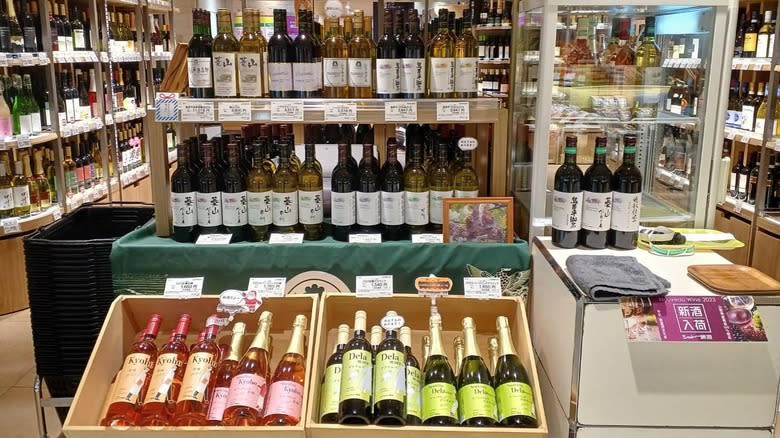
Climate aside, Japanese wines have another hurdle to overcome: the Japanese public. Not only is wine relatively unpopular in Japan, but Japanese wines specifically struggle to find a fanbase. When Japanese people drink wine, they typically favor bottles from Europe. Chilean wines are popular, too, thanks to trade agreements with Japan.
However, Japanese wine — and wine in general — is slowly catching on. Younger generations, who approach with curiosity, are more willing to try local wines. And there's clear potential for wine to make its mark on Japanese culture: the Japanese public does have an apparent interest in the drink. In the early 2000s, "The Drops of God", an ode to wine in manga form, became a bestseller; the series helped readers develop a more complex understanding of wine. Japan boasts more sommeliers than any other country, too. The majority of wine sold in Japan is served at restaurants, where sommeliers help diners pair wine with their food. It mirrors the Japanese practice of Omakase, where the chef picks your food for you.
Today, there are over 200 wineries in Japan. Koshu Valley, which has long been the center of Japan's grape production, is making a name for itself as an underrated wine region, and many vineyards offer tours. If you're planning a visit to Japan, consider adding one to your itinerary. It's a fun way to support Japan's burgeoning wine industry — and a rare chance to taste something unlike any other wine in the world.
Read the original article on Tasting Table.

